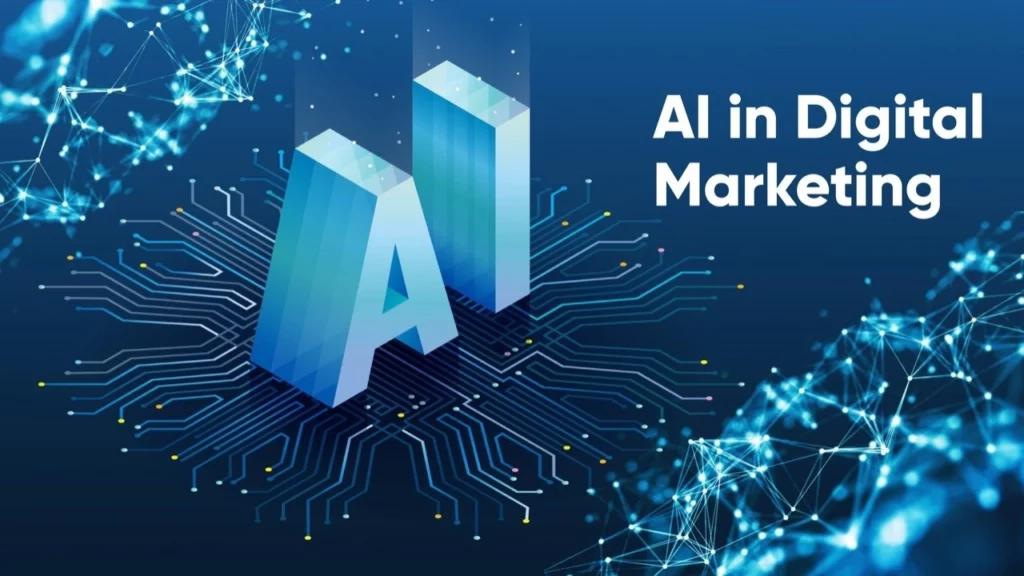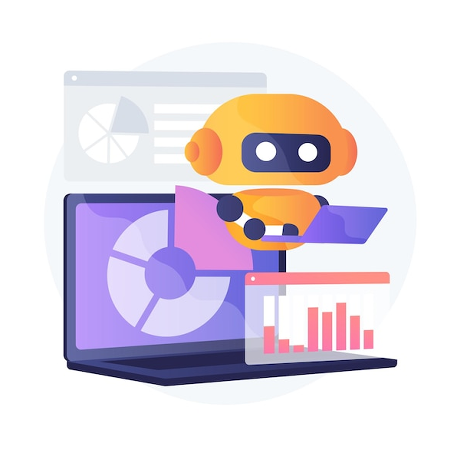
The intersection of AI and digital marketing has become increasingly important as businesses seek to optimize their marketing efforts and stay ahead of the competition. AI can provide marketers with valuable insights and tools to help them make data-driven decisions, personalize customer experiences, and improve overall performance.
One way AI is being used in digital marketing is through predictive analytics. This involves using machine learning algorithms to analyze customer data and predict future behaviors and actions. By understanding customers’ preferences and needs, marketers can tailor their messaging and offerings to better meet their needs and increase the chances of conversion.
Basics of AI and Marketing

The way that firms handle marketing has changed because of artificial intelligence (AI). With the ability to process and analyze vast amounts of data, AI can provide valuable insights into customer behavior, preferences, and engagement. Here are some basics about AI and marketing:
1. Data Analysis
AI can help businesses process large amounts of data from various sources, including customer data, social media data, and website data. By analyzing this data, businesses can gain insights into customer behavior, preferences, and trends.
2. Personalization
With the help of AI, businesses can personalize marketing messages and offers based on customer data. This can include personalized product recommendations, customized email campaigns, and targeted advertising.
3. Chatbots
AI-powered chatbots can provide customers with quick and accurate responses to their inquiries, improving the overall customer experience.
4. Content Creation
AI can help businesses create personalized and relevant content for different audiences by analyzing data on user behavior and preferences.
5. Predictive Analytics
Machine learning algorithms can analyze customer data to predict future behaviors and actions. This can help businesses make data-driven decisions and tailor their marketing efforts to maximize their impact.
6. Ad Optimization
AI can help businesses optimize their advertising campaigns by providing real-time data and insights into ad performance. This can enable businesses to adjust their strategies and improve their return on investment (ROI).
Impact of Recommendation Engines on Revenue

Recommendation engines have become a powerful tool for businesses to increase revenue and improve the customer experience. By analyzing customer data and behavior, recommendation engines can suggest products or services that customers are likely to be interested in, increasing the chances of conversion. Here are some ways in which recommendation engines can impact revenue:
1. Personalization
Recommendation engines can personalize the customer experience by suggesting products or services based on the customer’s preferences and behavior. Increased engagement and revenue may result from this.
2. Cross-selling
By suggesting complementary products or services, recommendation engines can increase the average order value and overall revenue.
3. Up-selling
Recommendation engines can suggest higher-priced or premium versions of products or services, leading to increased revenue per customer.
4. Retention
By recommending relevant products or services, recommendation engines can improve customer retention and loyalty, leading to repeat purchases and increased revenue over time.
5. Improved Customer Experience
By providing personalized recommendations, businesses can improve the overall customer experience, leading to increased satisfaction and loyalty.
Best Practices for Implementing Recommendation Engines

Implementing recommendation engines can be a powerful way for businesses to increase revenue and improve the customer experience. However, it’s important to follow best practices to ensure that the implementation is successful. Here are some best practices for implementing recommendation engines:
1. Identify Goals
To elaborate on this point, define clear goals for the recommendation engine implementation, such as increasing revenue or improving customer retention.
2. Collect Data
In order to provide personalized recommendations, it is essential to collect relevant customer data, such as purchase history, browsing behavior, and demographic information. This data will then be used to train the recommendation engine, enabling it to generate accurate and effective recommendations.
3. Choose the Right Algorithm
Select the appropriate recommendation algorithm based on the type of data being analyzed and the goals of the implementation. Common algorithms include collaborative filtering, content-based filtering, and hybrid approaches.
4. Test and Evaluate
To properly assess the recommendation engine, it is recommended to test it with a small subset of customers and evaluate the results. Additionally, utilizing A/B testing can help compare the performance of different algorithms and configurations.
5. Ensure Accuracy
Continuously monitor and improve the accuracy of the recommendation engine. Regularly retrain the algorithm with new data and adjust the configuration as needed.
6. Respect Privacy
Respectfully, in order to ensure customer privacy, it is important to collect and use data in compliance with relevant regulations and ethical standards.
Conclusion
In conclusion, recommendation engines have become an essential tool for businesses looking to increase revenue and improve the customer experience. By analyzing customer data and behavior, businesses can provide personalized recommendations that increase the chances of conversion, improve customer retention, and increase revenue per customer. However, the successful implementation of recommendation engines requires careful planning, testing, and ongoing monitoring and improvement. By following best practices such as setting clear goals, choosing the right algorithm, and respecting customer privacy, businesses can maximize the benefits of recommendation engines while providing a positive customer experience. As technology continues to evolve, we can expect to see even more innovative use cases for recommendation engines in the future.
FAQ
Q. What are some common pricing tactics used in pricing psychology?
A. Some common pricing tactics include odd pricing (setting prices that end in.99 or.95), anchoring (using a high-priced item to make other items seem more reasonable), and decoy pricing (adding a third, less desirable option to make a more expensive option seem more attractive).
Q. Is decoy pricing ethical?
A. Decoy pricing can be seen as manipulative or deceptive by some consumers. However, it is a widely used tactic and is not considered unethical in most cases.
Q. How can businesses use pricing psychology to maximize revenue?
A. By using tactics such as odd pricing, anchoring, and decoy pricing, businesses can influence customers’ perceptions of value and increase the chances of conversion. Additionally, using dynamic pricing (adjusting prices in real-time based on supply and demand) and price bundling (selling multiple items together for a discounted price) can also increase revenue.
Q. What are some potential risks of using pricing psychology?
A. The overuse of tactics such as decoy pricing or excessive discounting can lead to a perception of low quality or devaluing a product or service in the eyes of customers. Additionally, misleading pricing or false advertising can damage a company’s reputation and lead to legal issues.
Q. How can businesses determine the most effective pricing strategy for their products or services?
A. Conducting market research, analyzing customer data, and testing different pricing strategies can help businesses determine the most effective pricing strategy for their specific products or services. Additionally, seeking the advice of pricing experts or consultants can provide valuable insights and recommendations.


